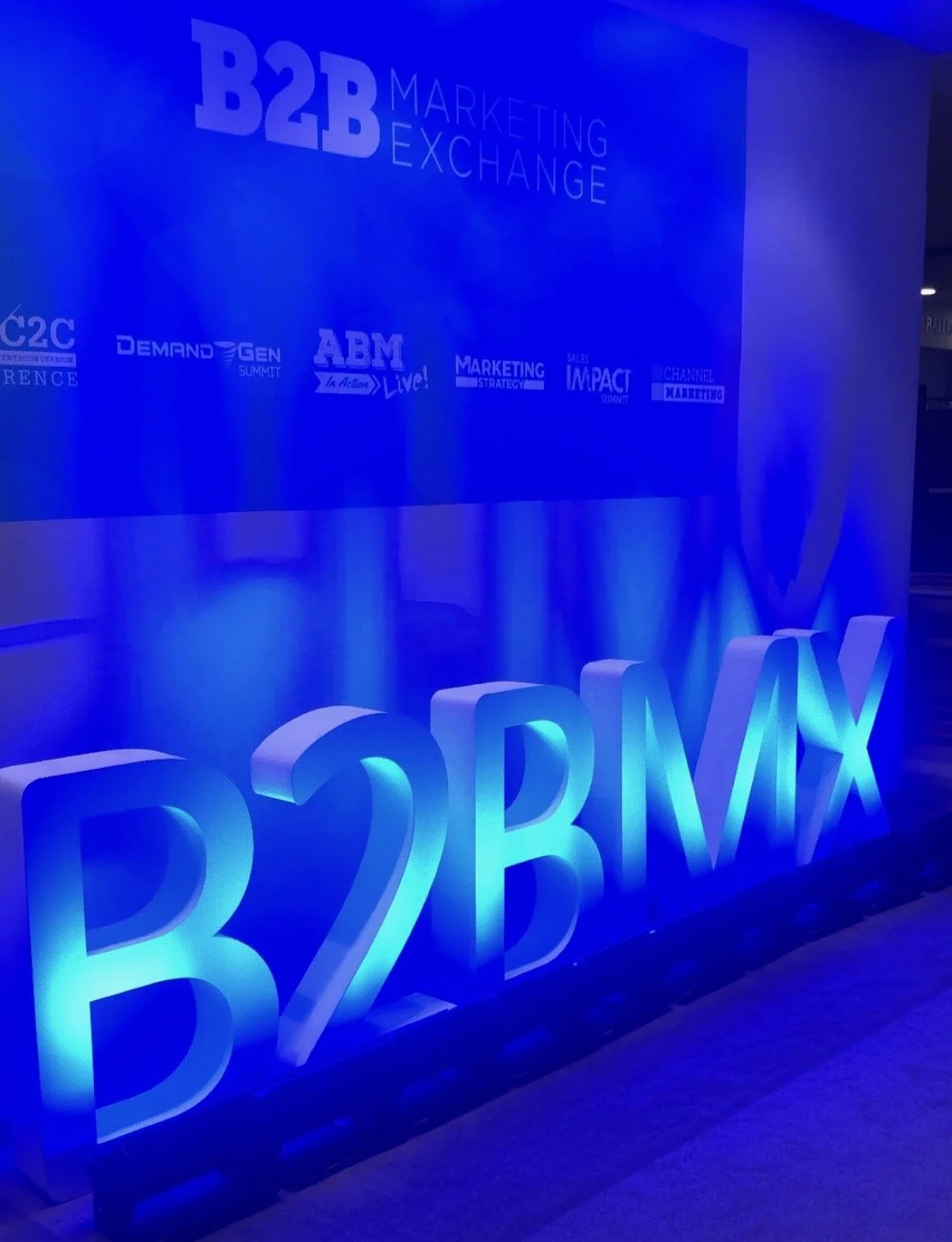Mindsailing was honored to be invited to the annual B2B Marketing Exchange Conference, held February 24-26, 2020, in Scottsdale, Arizona. In addition to valuable panels and workshops, the event also plays host to the Killer Content Awards — a ceremony spotlighting companies that are embracing new rules of engagement and transforming them into cutting-edge campaigns. And this year, Mindsailing was selected as a finalist for short-form content for our video that accompanied our 2019 Valentine’s Day water campaign.
Related Content: Read more about our recent award wins for social, digital, video, events and more.
In addition to celebrating our nomination, members of the Mindsailing team attended the conference to take home the latest insights in content marketing, demand generation, digital strategy and account-based marketing.
Across the various keynotes and sessions at B2BMX, a simple but consistent theme emerged: brand marketers are investing in shiny content to grow the bottom line, but much of it occurs in the absence of a true strategy to connect content with sales and the customer experience. Here are a few more of the highlights our team took in:
Building Audience-Centric Content For C-Level Campaigns
Leslie Cozatt, Optum
In the world of content marketing, reaching the C-suite with direct, impactful communications is the ultimate goal. But achieving this is easier said than done. The insight from this panel was the importance of targeted, persona-based thought leadership in order to meet these executives where they are.
By focusing content around C-suite topics and themes, and by linking content to business units to tell connected stories, Optum was able to dramatically increase engagement with health care executives. The company engaged 161% more new contacts than its initial goal and achieved 445% more content engagement. According to Cozatt, it’s vital to get to know your audience through personas and data. Then, after you have a firm grasp of their interests and unmet needs, you can deliver content with a focused theme across multiple channels.
Anatomy of a Future-Ready Content Engine
Christine Polewarczyk, Forrester | SiriusDecisions
One of the more compelling, insight-filled talks we heard was on the sometimes-unflashy subject of operationalizing content. Polewarczyk noted that less than one-quarter of recently surveyed companies described their content process as “mature” when it comes to insights, creation and optimization. That’s a tough hurdle to overcome, she said, noting that among companies who struggle to create revenue-driving content, misalignment among departments is usually the culprit.
Polewarczyk didn’t shy away from stressing the importance of leveraging personae and customer journeys, but noted that multiple individuals typically influence a single purchase of a SAAS platform or infrastructure technology. And with B2B sales processes that can sometimes have 20 or more interactions, marketers should consider multiple types of content that acknowledge multiple interaction preferences. To that end, asset differentiation is just as critical as department alignment in building effective content engines.
5 Reasons Why Marketing Should Own Customer Success
Jeanne Hopkins, Lola.com
The takeaway from this session was the importance of integrating the voice of the customer (VOC) across the entire marketing and sales continuum. Speaker Jeanne Hopkins started by acknowledging how ineffective hallway conversations were at driving change at Lola.com, a business-focused travel marketplace. So, as the company’s CMO, Hopkins placed stock in VOC meetings. That meant convening sales, marketing and other teams on a monthly basis to discuss customer feedback and decide how it should impact operations or the product roadmap. She also noted that it’s difficult to build influence across teams without first achieving alignment — a theme that popped up repeatedly during the conference.
B2B Email Creative – The Good, The Bad and The Ugly
Howard Sewell, Spear Marketing Group
At this session, we were surprised to hear how strategically unfocused many of today’s emails remain. In addition to highlighting the B2B punch list of best practices — such as including one message, one offer, and one CTA — Sewell noted that many practitioners in the tech space expect too much from this channel. In a performance-based culture where sales rule the day, it’s easy to lean on emails as a mechanism to close sales. However, they are ultimately more useful in action-oriented tasks like downloading or reading a white paper. This discussion also covered a collection of email practices to avoid — such as sacrificing detail for brevity and including an introductory salutation. (They just delay the reader reaching your message.)
Want to transform your content strategy? Let’s talk.


